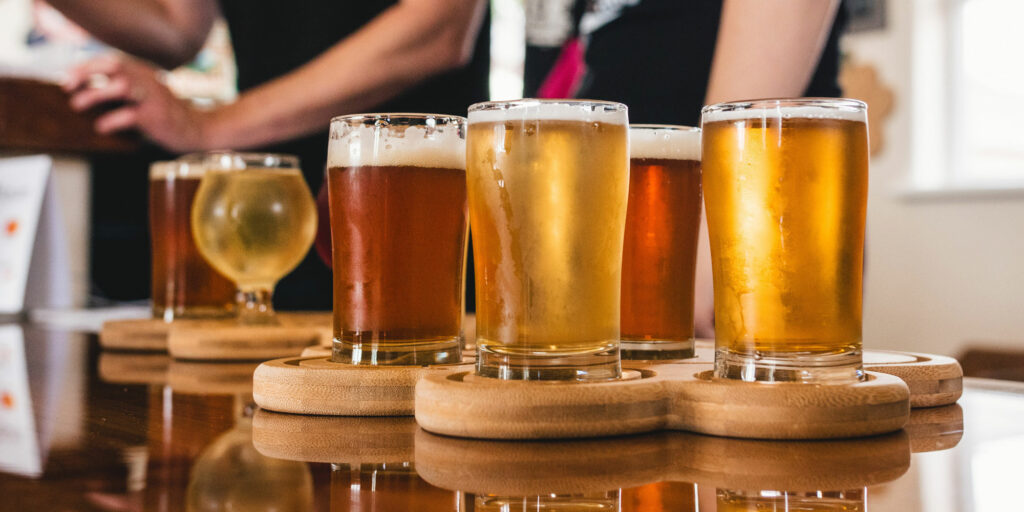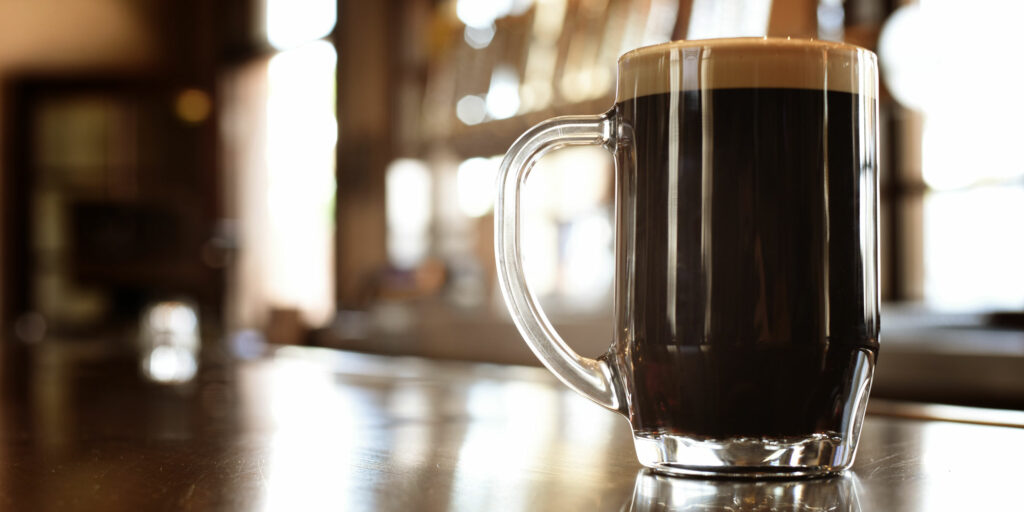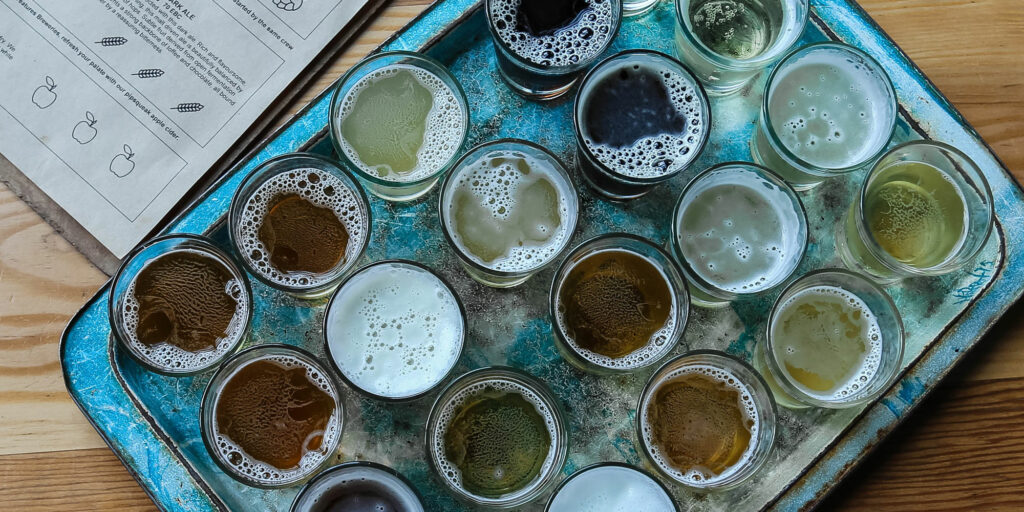Matthew Curtis provides some insight on beer trends, and what we might be seeing (and brewing) in the years to come.

Mystic Matt Gazes into Beer’s Crystal Ball
The entirety of the beer industry is dependent on following the right trends; predicting what customers want to drink, and when they want to drink it.
Even the largest majority of the market—roughly 75%—is dependent on the sales of a handful of mass produced lager brands that flit in and out of style. One day Peroni is the flavour of the month, the next it’s Moretti, and so on. But the further you trickle down the chain, the more extreme the fad chasing becomes, until the survival of a few hundred small, independent breweries depends on them figuring out what their customers are interested in drinking at that precise moment.
But how do you determine hype from a genuine trend, and create something that people will still relish drinking in months, or years to come? For example, in my early days of writing about beer I was told repeatedly (and incorrectly) that hazy IPA was a flash in the pan. But at the same time I was writing about how traditional cask styles such as Bitter and Mild were dead in the water—which I was wrong about. The former are now a mainstay of modern beer culture, and the latter are having what feels like a definitive, and deserved resurgence. One that I sincerely hope is long-lasting.
Predicting the next trend in beer often feels like guessing the length of a piece of string. However, in my role as a writer, and general observer (as well as enjoyer) of beer, I pick things up, and see the motion of what might be the next bandwagon worth jumping on. While I make no claim that these will end up being accurate, my gut tells me that these are some key beer trends worth keeping an eye on. Well… over the next year or two, at least.
The Return of European Classics

In a recent piece for Ferment Magazine I talked about how prevalent styles like, for example, Trappist Beers were in the early days of my beer enthusiasm, and how they might be overdue a comeback.
One of the biggest positives about the increasing popularity of modern beer styles like NEIPA or fruited sours is that their low bitterness and accessible range of flavours has brought a lot of new people into the culture of beer. 10 or 20 years ago, you would have had to work your way through several duff pints of real ale, or gradually accustom yourself to increasingly intense levels of bitterness until you discovered your comfort zone. For drinkers of a certain age who experienced that, getting into continental styles like Tripel or Hefeweizen felt like natural stepping off points. For newcomers, however, they don’t seem to have the same appeal.
Until now. Over the past couple of years I have witnessed a surge in the range and quality of British lagers, which run the gamut from Helles to Doppelbock. The breweries that produce these are now graduating towards other styles like Belgian Wit, and Saison, and the drinkers who learned to love these breweries through their hazy IPAs will be naturally more open towards exploring them, thanks to their cemented affinity towards these brands.
I believe the result of this will be a renewed interest in more obscure continental styles, born from a mixture of curiosity, and a desire for comfort, which is found in styles with a more established history. Classic European beer styles are back, and if you think about it hard enough, Quadrupel is only a single degree of separation away from Pastry Stout.
Hype Breweries Develop Solid Core Ranges
The most recent era in beer saw over 1000 new UK breweries emerge between 2002 and 2018. Among the most visibly successful to have emerged during this time are those who rode on wave after wave of hype, vying between them to release the freshest, most exciting, and often heavily hopped (or densely pastried) beers.
The strategy worked. Coinciding with the surge of social media, having a beer stash that features the latest, and most scarcely available beers was a form of credibility, and many breweries played into that. However, all good things must come to an end, and feels like a combination of the pandemic, and what I can only really describe as “life fatigue” means that for many, many of latest releases no longer carry the lustre they once did. There is no fear of missing out if you’re content with what you’ve already got, after all.
For many drinkers, comfort is now becoming more appealing than excitement. We’ve seen this in the renewed interest in cask styles like Bitter, and Mild. Another form this trend takes is that instead of buying a selection of different beers to taste through, many drinkers are looking for multiples of the same beer in order to double down on that feeling of comfort they’re seeking. That comfort is found through reliability, which in beer terms means a solid and dependable core range of beers.
Take a look at any of the most successful beer brands of the last 20 or 30 years to see examples of this. Would Sierra Nevada Beer Co. be the giant it is today if it weren’t for the eponymously named Pale Ale it built its legacy on? Finding a similar kind of resonance with today’s drinkers will be key to the success of breweries over the next five or ten years, especially when you consider that the majority of drinkers have always existed outside of the bubble of hype.
People want solid, dependable, and above all, tasty. So expect a few of your favourite producers to spend a lot of time figuring out what they can sell a lot of, repeatedly, and for this to influence what we see on bars, and bottle shop shelves, in the months to come.
Heritage Barley Varieties Are the New Hops

Hops are great, everyone agrees on that. The development in hop varieties since the turn of the century, and the unprecedented amount of flavours available from them has created the modern beer culture we know and enjoy today.
However, I feel that it’s time for another of beer’s four main ingredients to take centre stage. While yeast has certainly been vying for that position, with the likes of Voss Kveik, and other interesting strains emerging onto the market, I feel that it’s malt where the next flavour frontier lies, in terms of ingredients.
Picture the scene: you’re standing at the bar, the taps mostly serving styles such as lager, bitter, and mild. Some of the beers have names like ‘Annat’ ‘Plumage Archer’ and ‘Bere’—although this isn’t some pipe dream, this is genuinely the draught list I saw at Cafe Beermoth in central Manchester last week, during a tap takeover by Scottish brewery, Newbarns. To see a single beer produced using heritage malt is a thrill, but to see three at once is—you’ve guessed it—a solid indicator we’re about to see a trend
This matters because barley is so often thought of as the “backbone” of beer’s flavour, but varieties such as these, and others like Chevalier, as well as mainstays including Maris Otter and Golden Promise, mean flavour. Take the deep, chewy, cinder toffee character of Plumage Archer, for example, or the nutty, rounded character of Chevalier. And that’s before you get into some of the exciting new roasting tech that will unlock the latent potential in these grains.
And, where other products like coffee and chocolate have taken great strides in connecting that product back to its agriculture, largely, barley has not. As beer starts with great barley, heritage varieties also give breweries the chance to remind drinkers that before a beer is brewed, it is grown. Expect to see plenty of more interesting beers focusing on speciality and heritage malts in the very near future.
Everyone Invests in Sustainability
There will be no beer on a dead planet. That might seem a little melodramatic, but climate change is a genuine threat to beer. Not least because for every pint of beer brewed, five pints of water are used, but because both hops and malt are cultivated in areas at risk from both drought, and extreme weather like hail, which will cause severe damage to both.
These factors aren’t something we have to worry about in the future, either. They’re happening right now. In 2016, Australian hop farmers experienced a “never seen before” hailstorm, which threatened to reduce yields of prized hops including Galaxy, Vic Secret, Ella and Topaz by up to 40%.
In 2021 the northwestern United States and parts of southern Canada were hit by a weather pattern known as a heat dome. In the British Colombia town of Lytton, air temperature records were smashed to pieces when it was recorded at 49.9ºC for three consecutive days. This had a devastating effect on the grain harvest, including wheat and barley, reducing yields by near half. And, while hop yields were spared damage, a worker at one hop farm died of heat exhaustion during the freak weather pattern.
It might also be too late to prevent these challenging weather conditions from recurring, but by investing in sustainable practices, breweries can help reduce their impact on the environment, as well as the long-term costs involved in operating a brewery.
Expect breweries to begin investing in solar, and wind power, methane recapture plants, wastewater treatment systems like reed beds, carbon dioxide recapture and scrubbing, electric vans, and other methods, in order to minimise their impact on the environment. If they do so then we can ensure we’ll still have a planet on which to enjoy beer for many, many years to come.